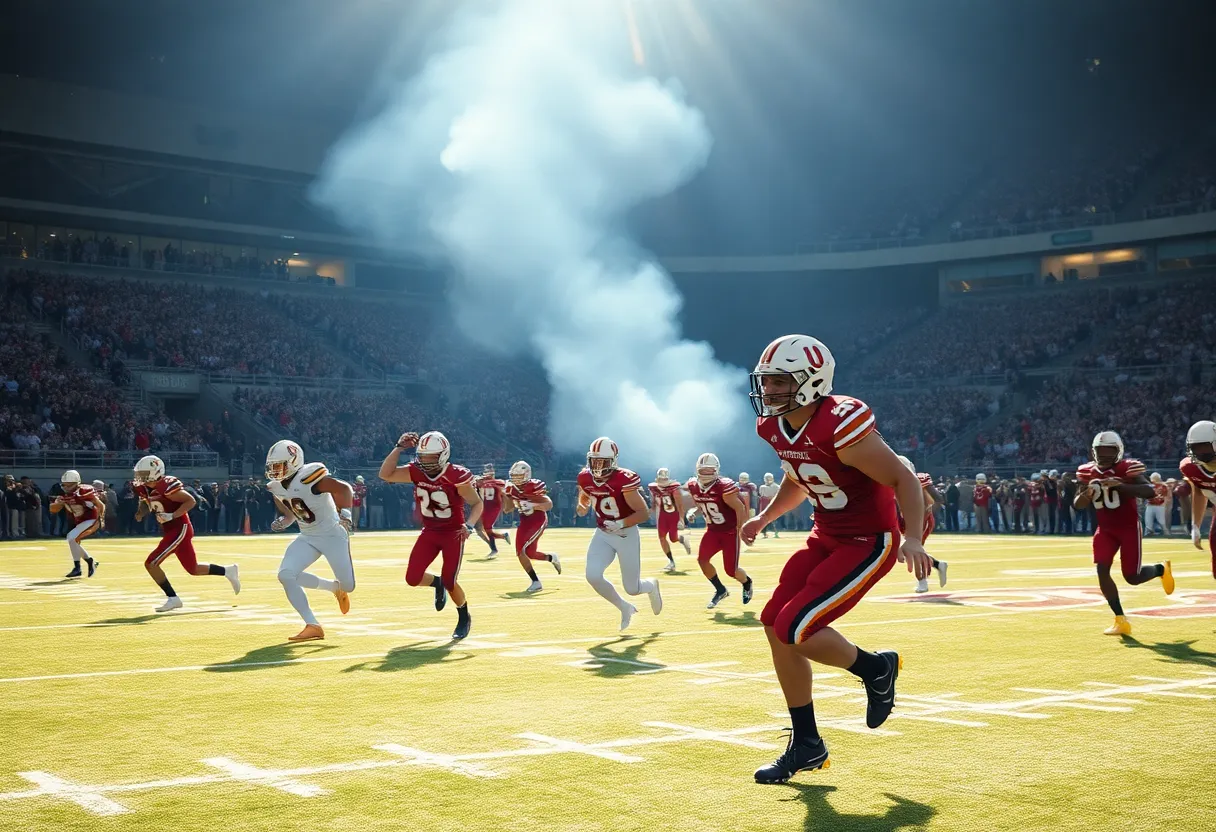Buffalo, NY, October 9, 2025
As New York State faces dry conditions, fire officials in Buffalo have confirmed that small, contained campfires remain permitted in designated areas despite a statewide burn ban. This measure aims to reduce wildfire risks while allowing residents to enjoy fall activities safely. Guidelines stipulate that fires must be kept within approved fire pits, monitored closely, and fully extinguished afterward. Violating these regulations could result in steep fines. As communities adapt, popular parks continue to welcome visitors under these new rules.
Buffalo, NY – Campfires Permitted Under Statewide Burn Ban Amid Dry Conditions
Buffalo, NY – October 9, 2025 – As dry weather persists across New York State, fire officials in Buffalo are emphasizing that small, contained campfires remain allowed in designated areas despite an active statewide burn ban. The policy serves as a critical measure to curb the risk of wildfires in vulnerable conditions, ensuring public safety while permitting limited outdoor enjoyment during the fall season.
The burn ban, enacted to address heightened fire dangers from prolonged dry spells, prohibits most open burning activities but carves out exceptions for small campfires when properly managed. Officials stress that these fires must stay within fire pits or rings in approved locations, such as state parks or private properties with proper containment. This approach balances recreation with prevention, allowing residents to partake in traditional fall activities like backyard gatherings or camping trips without compromising safety.
Key Guidelines for Safe Campfires
Under the ban, only campfires that are small in size and fully contained qualify for permission. Fire pits should not exceed three feet in diameter, and flames must remain low to minimize spark risks. Users are required to keep a water source nearby, such as a hose or buckets, and never leave the fire unattended. Once finished, all fires must be completely extinguished with water and stirred to ensure no embers remain.
Violations of the burn ban can result in significant fines, with penalties reaching up to $1,000 for individuals and higher amounts for organizations or repeat offenders. Enforcement has increased in recent weeks, with patrols monitoring high-risk areas like wooded parks and rural outskirts. Officials report that while most residents comply, a few incidents of unauthorized burning have sparked minor fires, underscoring the importance of adherence.
Local Impact and Community Response
In Buffalo, where autumn foliage draws crowds to local parks and recreation spots, the guidelines have prompted a cautious shift in how residents enjoy the season. Popular sites like Delaware Park and Chestnut Ridge Park continue to host visitors, but with posted signs reminding everyone of the rules. Families and outdoor enthusiasts are adapting by opting for contained fire setups, ensuring their outings align with safety protocols.
The dry conditions fueling the ban stem from below-average rainfall over the past month, leaving vegetation parched and more susceptible to ignition. Meteorologists forecast a continuation of these patterns through mid-October, prompting extended vigilance from fire departments. Buffalo’s fire services have prepared additional resources, including educational materials distributed at community centers and online portals detailing park-specific regulations.
Broader Context of the Burn Ban
New York’s statewide burn ban was implemented earlier this fall in response to rising wildfire threats observed not just locally but across the Northeast. Similar restrictions have been adopted in neighboring states, reflecting a regional effort to mitigate fire spread during a time of environmental stress. In Buffalo, the policy builds on longstanding fire safety education campaigns, which have historically reduced incident rates during peak seasons.
Residents are encouraged to consult local park websites or contact fire departments for the most current guidelines, as rules can vary slightly by location. For instance, some municipal parks may impose additional restrictions beyond the state minimum. This proactive communication aims to foster compliance and prevent tragedies, allowing the community to navigate the dry period safely.
Overall, the allowance for small campfires represents a practical compromise, preserving a slice of fall’s appeal while prioritizing wildfire prevention. As conditions evolve, officials will monitor weather patterns closely, ready to adjust the ban as needed to protect both people and the natural landscape.
FAQ: Understanding the Statewide Burn Ban in Buffalo
What is permitted under the statewide burn ban?
Small, contained campfires remain permissible in designated areas.
Why was the burn ban enacted?
The ban aims to prevent wildfires due to persisting dry conditions.
What are the risks of violating the ban?
Experts warn of fines for violations.
How are locals responding to the restrictions?
Locals enjoy fall outings cautiously.
Where can residents find more information?
Check local parks for guidelines.
What does ‘safety first’ mean in this context?
Fire officials urge prioritizing safety amid the dry weather.
Key Features of the Burn Ban Guidelines
| Feature | Description |
|---|---|
| Permitted Activities | Small, contained campfires in designated areas |
| Purpose | Prevent wildfires amid persisting dry conditions |
| Community Response | Locals enjoy fall outings cautiously |
| Enforcement | Experts warn of fines for violations |
| Resources | Check local parks for guidelines |
| Priority | Safety first, as urged by fire officials |



